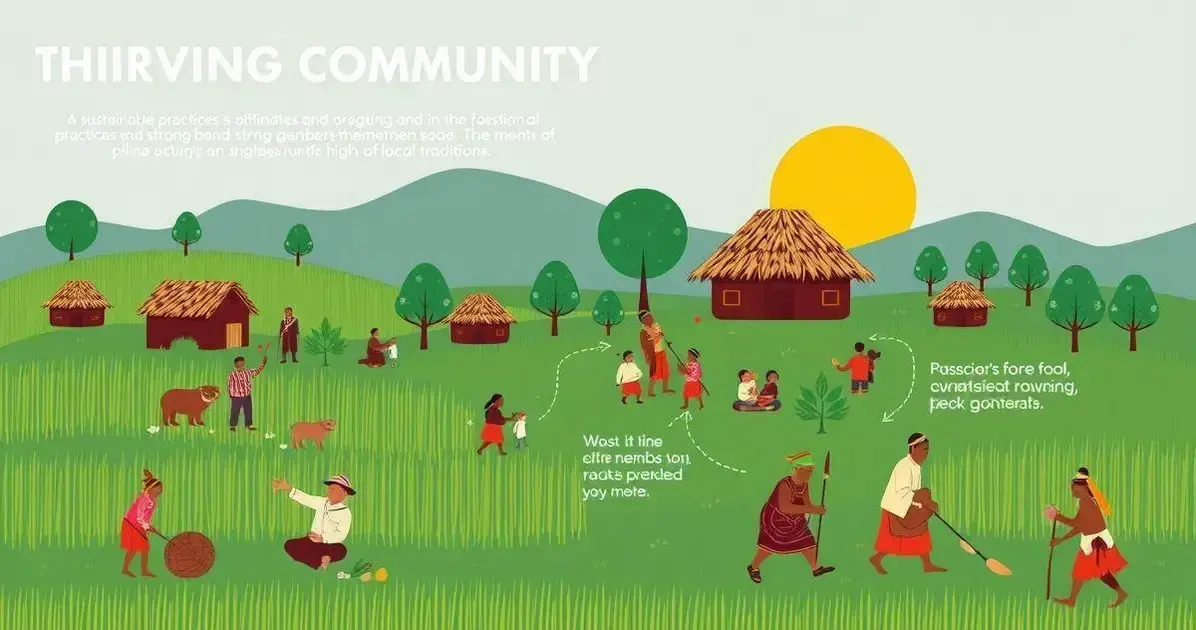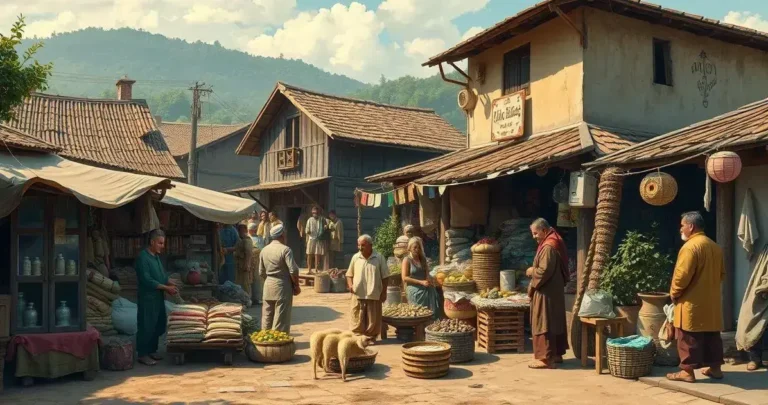Announcements
Traditional Economy is more than just an old way of life — it’s a system built on customs, community, and cultural heritage. Decisions aren’t driven by profit, but by tradition and shared values.
It’s a lifestyle where people grow, make, and trade what they need, often without using money. Skills are passed down through generations, keeping culture alive.
Curious how this system still exists today and what makes it so unique? Keep reading — you’re about to find out.
Announcements
What is a Traditional Economy?
A traditional economy is a system in which economic decisions are based on customs, traditions, and cultural beliefs. This type of economy relies heavily on the community’s historical practices. Goods and services are produced for personal use, and bartering is a common way to exchange these items.
Key Features of Traditional Economies
In a traditional economy, the methods of production are often passed down through generations. This ensures that skills and knowledge are preserved within the community. Often, agriculture is the main focus, with families growing crops that they consume and trade.
Announcements
Role of Community
Community plays a crucial role in traditional economies. Families and local groups work together to share resources and assist each other. This collaboration strengthens community bonds and ensures that everyone has access to necessities.
Stability and Change
While traditional economies provide stability and a sense of belonging, they can struggle to adapt to change. External influences, such as globalization and modernization, often challenge these systems, leading to shifts in traditional practices.
Understanding a traditional economy allows us to appreciate the cultural richness and unique practices that these systems embody. In a rapidly changing world, the lessons from traditional economies may offer pathways for sustainable future development.
Characteristics of Traditional Economies
Traditional economies have several distinct characteristics that set them apart from modern economic systems. Understanding these features helps clarify how they function within communities.
1. Reliance on Agriculture
Most traditional economies depend heavily on agriculture. Families often grow their own food and share resources. This self-sufficiency helps sustain the community and ensures that everyone has access to basic needs.
2. Barter System
In place of currency, traditional economies typically use a barter system for trade. People exchange goods and services directly. For example, one family might trade vegetables for handmade crafts from another.
3. Cultural Practices
Traditions and customs play a vital role in shaping economic activities. Skills and knowledge are often passed down through generations, ensuring that cultural practices remain strong. Festivals, rituals, and local customs influence how resources are managed and exchanged.
4. Limited Technology
Traditional economies use minimal technology. Tools and methods are often simple and time-tested. This reliance on manual labor can foster a closer connection to the land and community.
5. Community Focus
These economies emphasize community over individual profit. Decisions are often made collectively, which ensures that the needs of all members are considered. This cooperation strengthens social ties and enhances mutual support.
Advantages of Traditional Economies

Traditional economies offer several advantages that benefit both individuals and communities. Understanding these benefits helps highlight their importance in today’s fast-paced world.
1. Sustainability
Traditional economies are often sustainable. By relying on local resources and maintaining agricultural practices, these systems avoid over-exploitation of the environment. This balance helps preserve the ecosystem for future generations.
2. Strong Community Bonds
In traditional economies, strong community bonds are a key advantage. Members often work together to support one another, leading to a sense of belonging. This unity fosters collaboration and mutual aid, making the community resilient in tough times.
3. Cultural Preservation
These economies hold significant cultural value. By practicing age-old traditions and customs, they help preserve unique identities. This cultural richness enhances the community’s pride and fosters a sense of heritage.
4. Low Cost of Living
Traditional economies often have a lower cost of living. Families typically produce their own food, reducing reliance on external markets. This self-sufficiency can lead to a more stable lifestyle for community members.
5. Empowerment through Self-Sufficiency
People in traditional economies become empowered through self-sufficiency. They learn valuable skills such as farming, crafting, and bartering. This knowledge equips them to manage their resources effectively, without needing to rely on modern economic systems.
Challenges Facing Traditional Economies
Traditional economies face several challenges that can hinder their sustainability and growth. Understanding these issues is essential to appreciate the difficulties these communities encounter.
1. Globalization
Globalization poses a significant challenge to traditional economies. As the world becomes more interconnected, local practices may be overshadowed by industrialized market systems. Outside influences can threaten local customs and ways of life.
2. Climate Change
Climate change impacts agriculture and resource availability, which are critical for traditional economies. Changing weather patterns and extreme conditions can threaten food security, making it difficult for communities to sustain themselves.
3. Technological Advancements
While technology can improve efficiency, it can also create a gap between traditional and modern economies. Communities may struggle to adapt to new tools and methods, leading to fewer opportunities for growth and development.
4. Economic Pressure
As modern economies evolve, traditional economies often face economic pressure. Young people may leave their communities in search of better job opportunities, leading to an aging population and reduced labor force.
5. Loss of Cultural Identity
With increasing globalization, there is a risk of losing cultural identity. Young individuals may adopt modern values, drifting away from traditional practices and weakening community ties that have held them together for generations.
Examples of Traditional Economies Today
Today, numerous communities around the world still operate under a traditional economy. Here are some examples that illustrate how these economies function in modern society:
1. Indigenous Tribes
Many indigenous tribes, such as the Inuit in Canada and Native American tribes in the United States, maintain traditional economies. They rely on hunting, fishing, and gathering to sustain their communities, preserving their cultural practices and ways of life.
2. Rural Farming Communities
Rural farming communities in countries like India and Africa often rely on traditional agricultural practices. Families grow crops primarily for personal consumption and local trade, using techniques passed down through generations.
3. Artisan Cooperatives
Artisan cooperatives in regions like Mexico and Peru highlight traditional economies by producing handmade crafts and textiles. Members often share resources and skills, ensuring that their crafts reflect local culture while supporting their livelihoods.
4. Fishing Communities
Fishing communities, such as those in Southeast Asia, typically engage in small-scale fishing practices. They often barter goods with nearby villages, relying on the ocean’s resources while respecting sustainable practices to protect their environment.
5. Nomadic Herding Groups
Nomadic herding groups, such as the Maasai in East Africa, continue to practice a traditional economy based on herding livestock. Their economy revolves around trade and subsistence grazing, adapting to their environment while maintaining cultural identity.
FAQ – Frequently Asked Questions about Traditional Economies
What is a traditional economy?
A traditional economy is based on customs, traditions, and cultural practices, often relying on agriculture and bartering for goods and services.
What are the characteristics of traditional economies?
Characteristics include reliance on agriculture, use of a barter system, strong community focus, preservation of cultural practices, and limited technology.
What are the advantages of traditional economies?
Traditional economies are sustainable, foster strong community bonds, preserve cultural heritage, have a lower cost of living, and empower individuals through self-sufficiency.
What challenges do traditional economies face today?
Challenges include globalization, climate change, technological advancements, economic pressure, and the loss of cultural identity.
Can you provide examples of traditional economies today?
Examples include indigenous tribes, rural farming communities, artisan cooperatives, fishing communities, and nomadic herding groups.
How do traditional economies differ from modern economies?
Traditional economies focus on subsistence and community relations, while modern economies emphasize cash transactions and industrial production.






